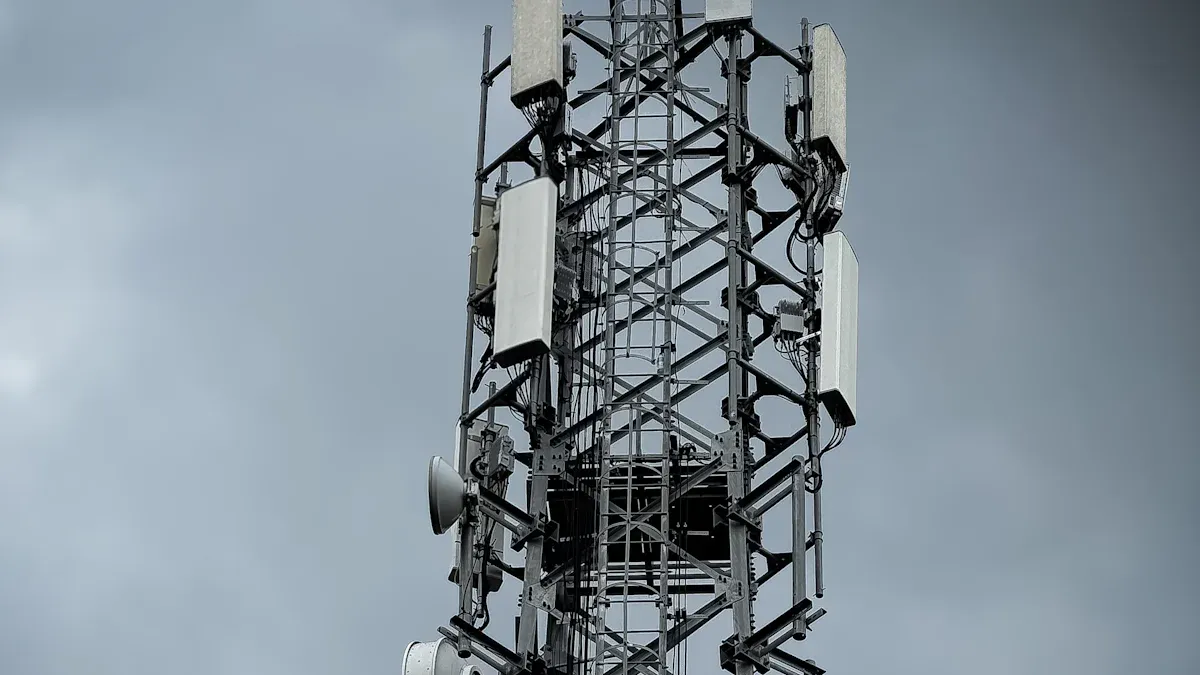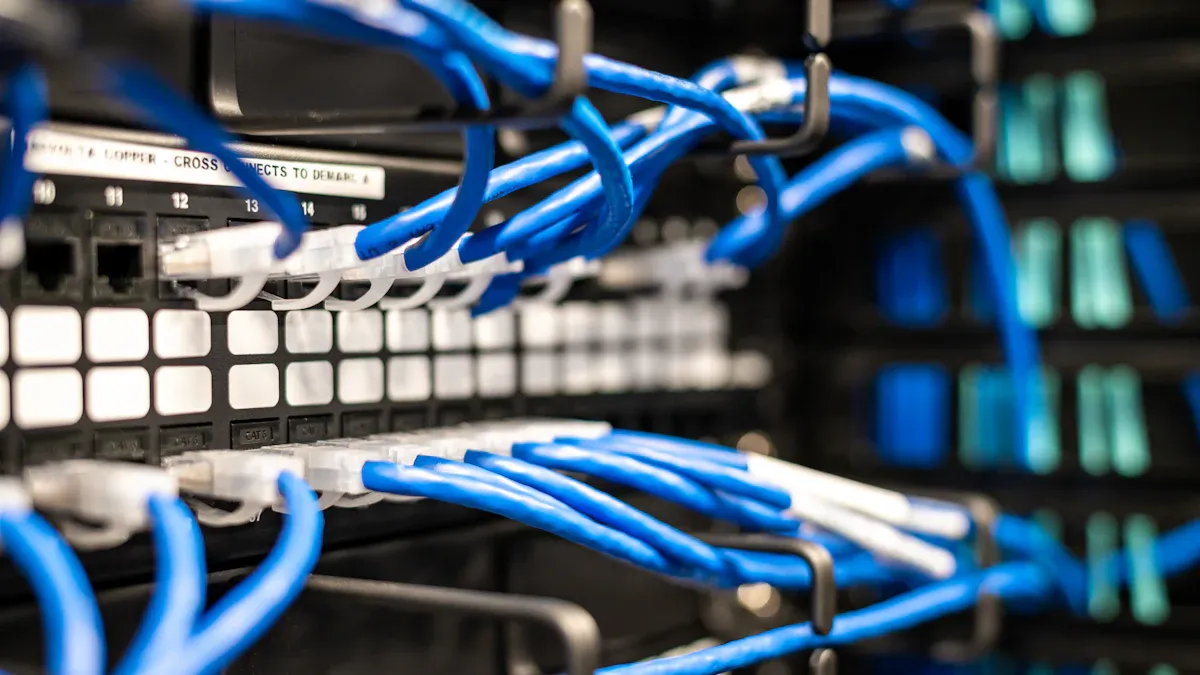3 Reasons Water Sensor Switch in Telecom Cabinet Matters

A water sensor switch in telecom cabinet protects sensitive equipment from moisture. Water or condensation can cause immediate short circuits and long-term corrosion. Early detection of leaks helps technicians take action before damage occurs. > Water intrusion often leads to service outages and expensive repairs. Reliable monitoring with these sensors ensures stable network performance.
Key Takeaways
Water sensor switches detect moisture early to protect telecom equipment from damage and corrosion.
Early alerts help technicians fix leaks quickly, preventing costly repairs and service outages.
These sensors keep networks running smoothly by reducing downtime and maintaining customer trust.
Using water sensors lowers maintenance costs by enabling planned repairs and extending equipment life.
Installing water sensor switches improves safety by preventing electrical hazards caused by water.
Equipment Damage

Water Risks
Telecom cabinets often face harsh environments. Rain, humidity, and condensation can enter cabinets through small gaps or damaged seals. Temperature changes cause moisture to form inside the cabinet. Water or moisture inside the cabinet can create serious risks. Short circuits may occur when water touches electrical components. Corrosion can slowly damage circuit boards and connectors. Over time, even a small amount of moisture can lead to equipment failure.
Many telecom cabinets sit outdoors or in areas with poor climate control. These locations increase the risk of water exposure. Technicians may not notice leaks or condensation until equipment starts to fail. By then, the damage may already be costly.
Early Detection
A water sensor switch in telecom cabinet acts as an early warning system. The sensor detects the presence of water or high humidity before it reaches critical components. When the sensor triggers, it sends an alert to maintenance teams. This alert allows technicians to respond quickly and prevent further damage.
Early detection helps avoid:
Costly repairs from short circuits.
Replacement of corroded parts.
Extended downtime due to equipment failure.
A water sensor switch in telecom cabinet reduces the risk of unexpected outages. It protects sensitive electronics and extends the life of the equipment. Investing in this technology prevents small leaks from turning into major problems. Telecom operators can maintain reliable service and avoid expensive repairs by using these sensors.
Network Uptime

Service Impact
Telecom networks rely on continuous operation. Water intrusion inside a cabinet can cause immediate equipment shutdown. When a device fails, the network may lose connectivity in a specific area. Customers notice dropped calls, slow data speeds, or complete service loss. Even a brief interruption can affect hundreds or thousands of users. Businesses depend on stable connections for daily operations. Service providers risk losing trust if outages happen often.
Network downtime leads to lost revenue and damaged reputation. Quick identification of water-related issues helps prevent these problems.
Fast Response
A water sensor switch in telecom cabinet provides real-time alerts. Maintenance teams receive notifications as soon as the sensor detects moisture. This early warning allows technicians to act before water damages critical systems. Fast response reduces the time equipment stays offline. Teams can fix leaks, dry components, and restore service quickly.
Key benefits of fast response include:
Shorter outage duration
Fewer affected customers
Lower risk of permanent equipment damage
Operational integrity remains strong when teams address issues promptly. Customers experience fewer disruptions and maintain confidence in their service provider. Reliable network uptime supports both business operations and personal communication needs.
Maintenance Costs
Proactive Strategy
Early leak detection plays a key role in reducing maintenance costs for telecom operators. When a water sensor switch in telecom cabinet detects moisture, it sends an alert before damage occurs. Technicians can respond quickly and fix the problem at its source. This approach prevents small leaks from turning into major failures. Operators avoid emergency repairs, which often cost more than scheduled maintenance.
Proactive maintenance helps teams plan their work. They can schedule repairs during low-traffic hours, which minimizes service interruptions. This strategy also reduces the need for frequent inspections, saving both time and resources.
A proactive approach keeps equipment in better condition. Regular monitoring with sensors allows teams to address issues before they escalate. This method supports a stable network and reduces the risk of unexpected downtime.
Long-Term Savings
Integrating water sensors into telecom cabinets leads to significant long-term savings. Early detection extends the lifespan of expensive equipment. When moisture does not reach sensitive parts, circuit boards and connectors last longer. Operators spend less on replacements and repairs over time.
Key benefits of long-term savings include:
Lower maintenance budgets
Fewer equipment failures
Reduced risk of electrical hazards
Water inside a cabinet can create dangerous situations. Short circuits may cause fires or electric shocks. Sensors help prevent these risks by alerting teams before water reaches live components. Safety improves for both technicians and the public.
A water sensor switch in telecom cabinet supports a cost-effective and safe maintenance plan. Operators who invest in this technology protect their assets and ensure reliable service for customers.
Telecom operators gain three key advantages by using water sensor switches: equipment protection, network reliability, and lower maintenance costs. These sensors help prevent damage, reduce service interruptions, and save money over time.
Proactive installation keeps networks running smoothly and extends the life of critical infrastructure. Operators should prioritize this technology to avoid costly outages and maintain customer trust.
FAQ
What does a water sensor switch do in a telecom cabinet?
A water sensor switch detects moisture or leaks inside the cabinet. The device sends alerts to maintenance teams. Early warnings help prevent equipment damage and service interruptions.
How often should technicians check water sensor switches?
Technicians should test water sensor switches during regular maintenance visits. Most sensors require minimal upkeep. Scheduled checks ensure the sensors work correctly and provide reliable protection.
Can water sensor switches prevent all water damage?
Water sensor switches reduce the risk of damage by providing early alerts. They cannot stop leaks but help teams respond quickly. Fast action limits harm to equipment and network services.
Are water sensor switches difficult to install?
Most water sensor switches use simple mounting and wiring methods. Technicians can install them without special tools. Manufacturers often provide clear instructions for setup.
What types of alerts do water sensor switches provide?
Many water sensor switches send alerts through alarms, indicator lights, or network notifications. Some models connect to remote monitoring systems. These alerts help teams act before water causes serious problems.
See Also
Top Five Benefits Of Using Outdoor Communication Cabinets
A Comprehensive Guide To The Functions Of Telecom Cabinets
Step By Step Guide To Installing And Maintaining Smoke Sensors
Essential Outdoor Telecom Cabinet Standards For Communication Devices
Exploring The Importance Of Outdoor Communication Cabinets In Telecom
CALL US DIRECTLY
86-13752765943
3A-8, SHUIWAN 1979 SQUARE (PHASE II), NO.111, TAIZI ROAD,SHUIWAN COMMUNITY, ZHAOSHANG STREET, NANSHAN DISTRICT, SHENZHEN, GUANGDONG, CHINA
